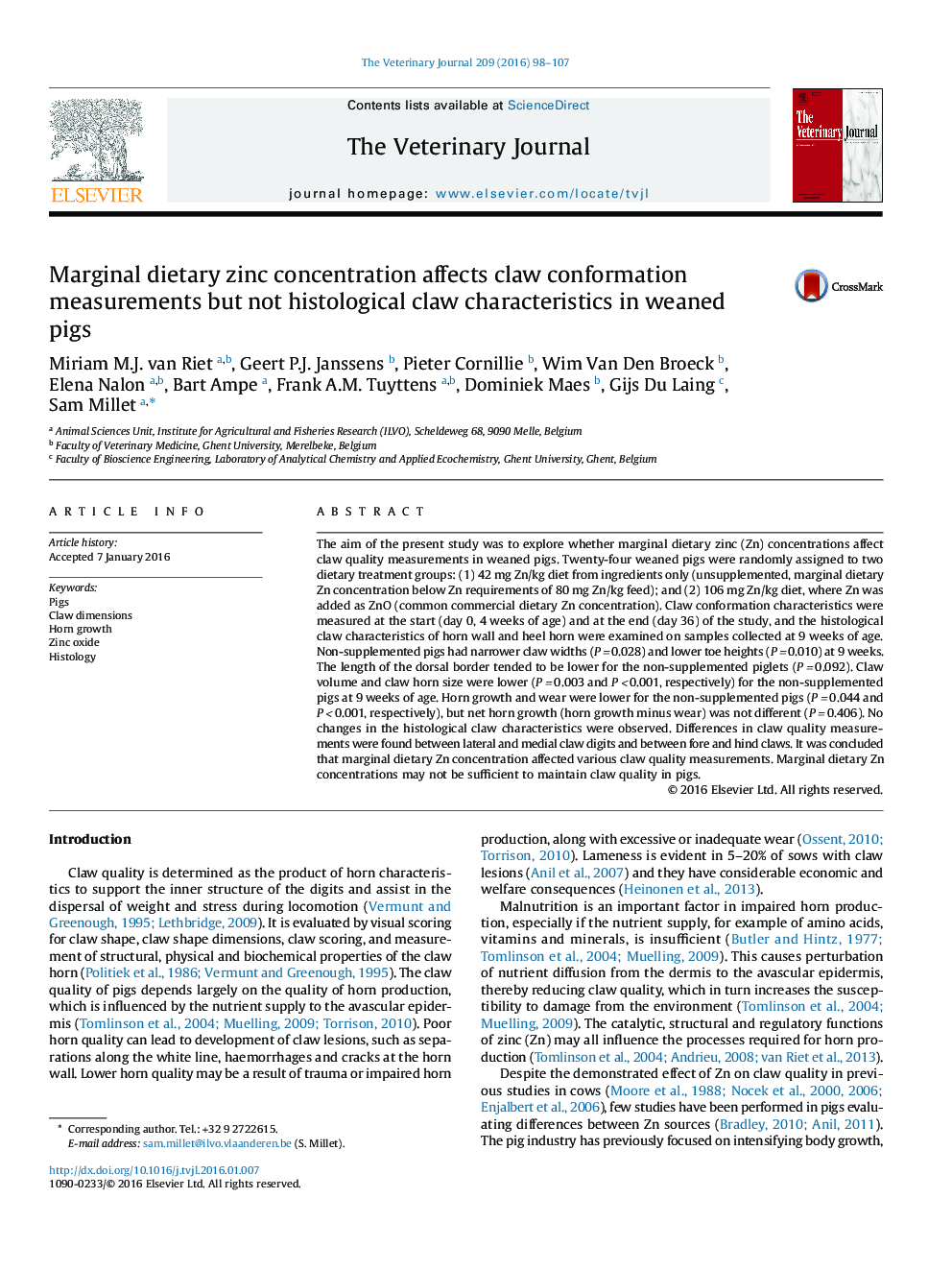| کد مقاله | کد نشریه | سال انتشار | مقاله انگلیسی | نسخه تمام متن |
|---|---|---|---|---|
| 5797333 | 1555234 | 2016 | 10 صفحه PDF | دانلود رایگان |
- Claw conformation changed over a period of 5 weeks in non-supplemented weaned pigs compared to Zn-supplemented pigs.
- Histological claw characteristics did not differ significantly between treatment groups.
- Claw quality differed for lateral and medial digits and for fore and hind claws.
The aim of the present study was to explore whether marginal dietary zinc (Zn) concentrations affect claw quality measurements in weaned pigs. Twenty-four weaned pigs were randomly assigned to two dietary treatment groups: (1) 42âmg Zn/kg diet from ingredients only (unsupplemented, marginal dietary Zn concentration below Zn requirements of 80âmg Zn/kg feed); and (2) 106âmg Zn/kg diet, where Zn was added as ZnO (common commercial dietary Zn concentration). Claw conformation characteristics were measured at the start (day 0, 4 weeks of age) and at the end (day 36) of the study, and the histological claw characteristics of horn wall and heel horn were examined on samples collected at 9 weeks of age. Non-supplemented pigs had narrower claw widths (Pâ=â0.028) and lower toe heights (Pâ=â0.010) at 9 weeks. The length of the dorsal border tended to be lower for the non-supplemented piglets (Pâ=â0.092). Claw volume and claw horn size were lower (Pâ=â0.003 and Pâ<â0.001, respectively) for the non-supplemented pigs at 9 weeks of age. Horn growth and wear were lower for the non-supplemented pigs (Pâ=â0.044 and Pâ<â0.001, respectively), but net horn growth (horn growth minus wear) was not different (Pâ=â0.406). No changes in the histological claw characteristics were observed. Differences in claw quality measurements were found between lateral and medial claw digits and between fore and hind claws. It was concluded that marginal dietary Zn concentration affected various claw quality measurements. Marginal dietary Zn concentrations may not be sufficient to maintain claw quality in pigs.
Journal: The Veterinary Journal - Volume 209, March 2016, Pages 98-107
